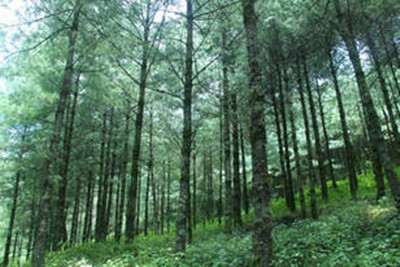Dear A Moment of Science, I know that around 250 millionyears ago the Earth was a lot hotter than it is today.
亲爱的科学一刻,我知道大约在2.5亿年前,地球要比今天热的多的多。
So I'mwondering what that meant, exactly?
所以,我就在想这到底意味着什么?
How did the planet look different than it does today?
那时的地球相比今天而言有多大的不同呢?

Well, the Earth was different in lots of ways hundreds of millions of years ago.
几亿年前的地球与今天相比在很多方面都有所不同。
One majordifference linked to warmer global temperatures was that Antarctica was not the icy, barrenwasteland it is today.
最主要的一个差异与全球温度有关,那就是南极当时并不像今天这样是一片被冰雪覆盖的荒芜之地。
In fact, it was covered by forest.
事实上,当时的南极是一片森林。
What kind of forest?
什么样的森林呢?
That's what scientists are trying to figure out.
科学家们也在试图寻找答案。
Fossilized leaf impressions seemto show that mats of leaves once covered the ground.
从树叶化石的痕迹来看,当时的地表被层层的树叶所覆盖,
That suggests that the trees weredeciduous, meaning that they shed their leaves at the same time.
这说明树木会在每年的相同时间内落叶。
But fossilized wood from theregion tells a different story.
但是该地区的木化石却又说明了另一种情况。
Cells in the tree rings show a pattern of growth that's consistent with evergreen trees, meaning trees that don't shed their leaves.
年轮的细胞体现出树木的生长方式与常青树相同。也就是说它们不会落叶。
So the ancient Antarctic forests were probably a mix ofevergreen and deciduous trees.
因此,古代的南极森林可能是一片常青树和落叶树的杂交林。
Analysis of carbon molecules in the fossil woods shows something similar.
对木化石中碳分子的分析结果也显示有所相似之处。
And it also suggests that the forests have some similarities to tropical forests today.
同时,分析结果还表明了南极森林和今天的热带雨林也存在一定的相似。
Another question is how Antarctic forests dealt with constant daylight half the year and near totaldarkness the other half.
另一个问题就是南极森林是如何适应极昼和极夜现象的。
Wouldn't that mess with their ability to photosynthesize?
这难道不会扰乱它们光合作用的能力吗?
More research might reveal the answer.
想要找出答案可能还需要进行更多的研究。



